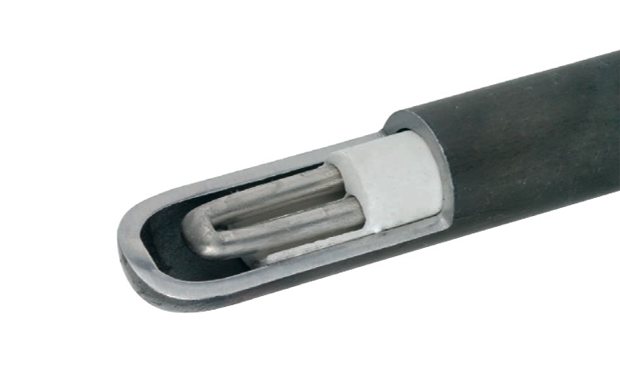
 FAQ on thermocouple selection: grounded and ungrounded
FAQ on thermocouple selection: grounded and ungroundedA set of FAQs to discuss the advantages and problems of using grounded and ungrounded thermocouples. Thermocouples are typically used for high temperatures (compared to RTDs), high vibration applications, and situations where rapid response is required. There are some advantages to using grounded thermocouples, but there are also some risks.
What does "grounded" or "ungrounded" mean for thermocouples?
The thermocouple temperature sensor is made of two wires of different metals welded together at a point called the junction. That's where the actual temperature is measured. The thermocouple sensor consists of several elements: metal sheath, thermocouple wire and junction. A thermocouple junction is welded to the sheath at the top of the sensor for grounding. In ungrounded thermocouples, the junction does not contact the sheath.
What is the main difference between grounded and ungrounded thermocouples?
Ground thermocouple temperature sensor: This type of temperature measuring device has the advantage of higher heat transfer efficiency. By welding the joint to the metal sheath, the temperature sensor of dimension connected ground thermocouple responds faster to temperature changes because the heat path generated by metal to metal contact is shorter than that of ungrounded thermocouple. However, this grounding will have adverse side effects. By welding the connector to the sheath, an electrical connection is also formed between the wire and the sheath. If the sensor is connected to earth at the measuring point and the wire is connected to the controller grounded at another location, this may result in a "ground loop". The voltage potential of the two grounds may be different, resulting in a bad circuit that may damage the equipment. Ungrounded thermocouples: Ungrounded thermocouples are not welded to the metal sheath. Generally, there are non-conductive powders, such as magnesium oxide, around the junction at the sensor tip. This material slows down the heat transfer from the measured medium to the thermocouple node. Since the thermocouple wire is electrically isolated from the metal sheath and housing, the use of ungrounded thermocouples can reduce the risk of grounding loops.
How do I know if I have a grounding loop?
The effect of the ground loop may vary. Measuring instruments may be more susceptible to weather changes and provide erratic readings. In some cases, the measuring equipment may stop working due to electrical damage. In extreme cases, smoking may occur.
How to prevent grounding loop?
A good rule is that only one of the instrument loops is grounded. You have two options: ground the transmitter (connector) or the controller/recorder, but not both. Transmitters selected to have internal isolation between input, output, and ground usually provide sufficient isolation to eliminate ground loops. Loop isolators can also be used and can be placed in loop wiring circuits to prevent this. Although many new temperature transmitters have internal isolation, the use of ungrounded thermocouples is a fail safe method to eliminate grounding loops.
Tel./WeChat 18717811268 Huang Gong sales@weilianchina.com

